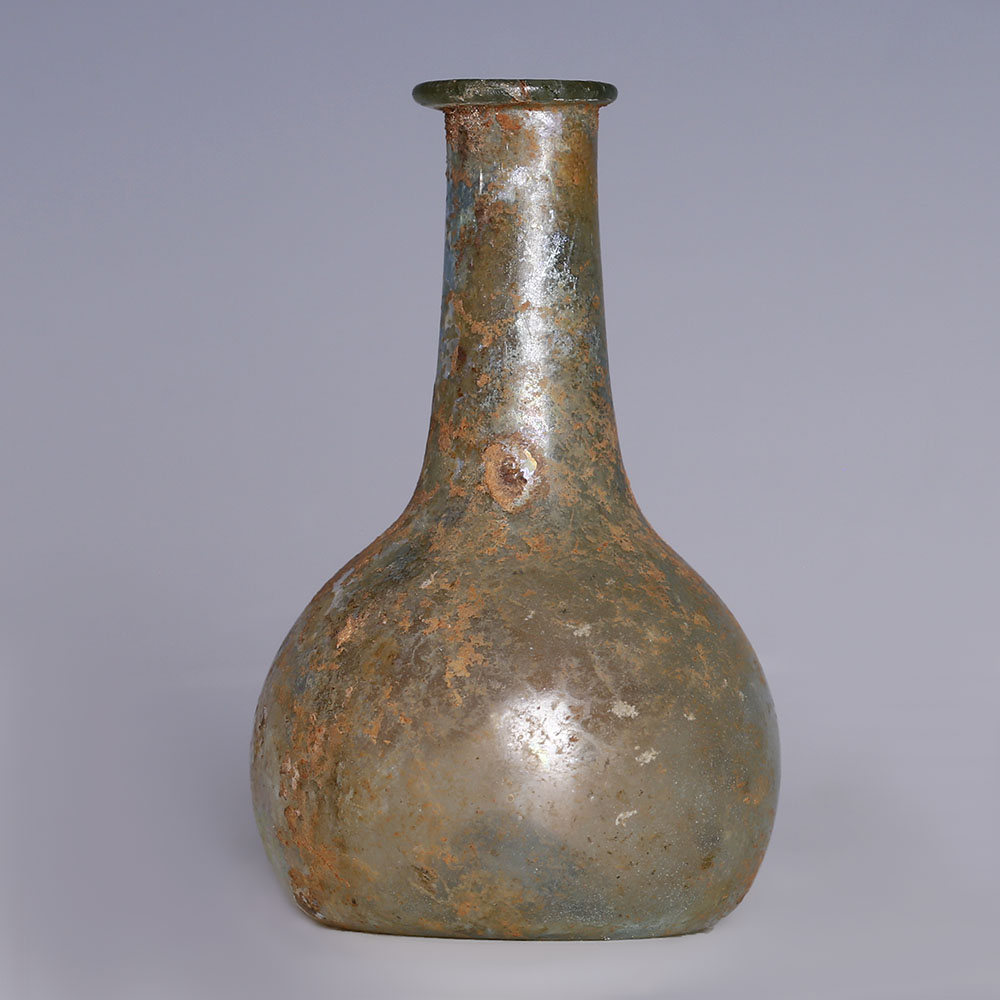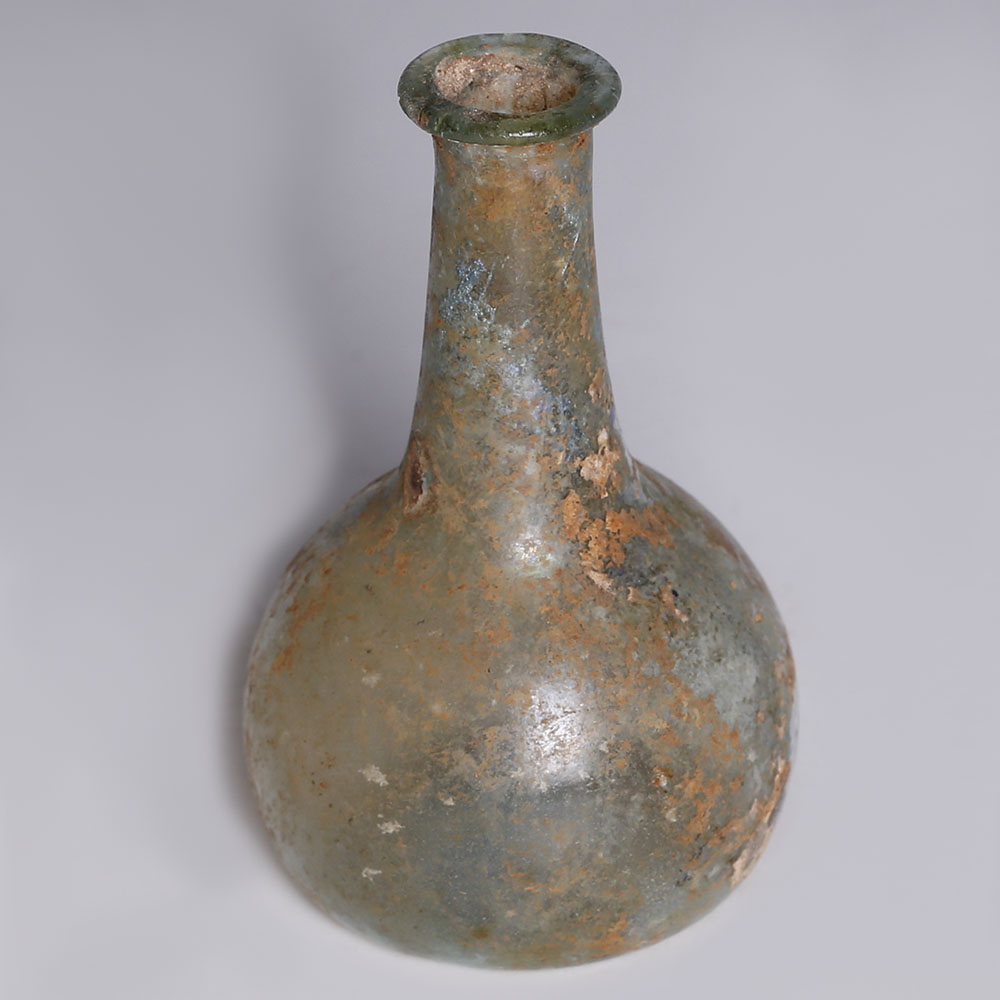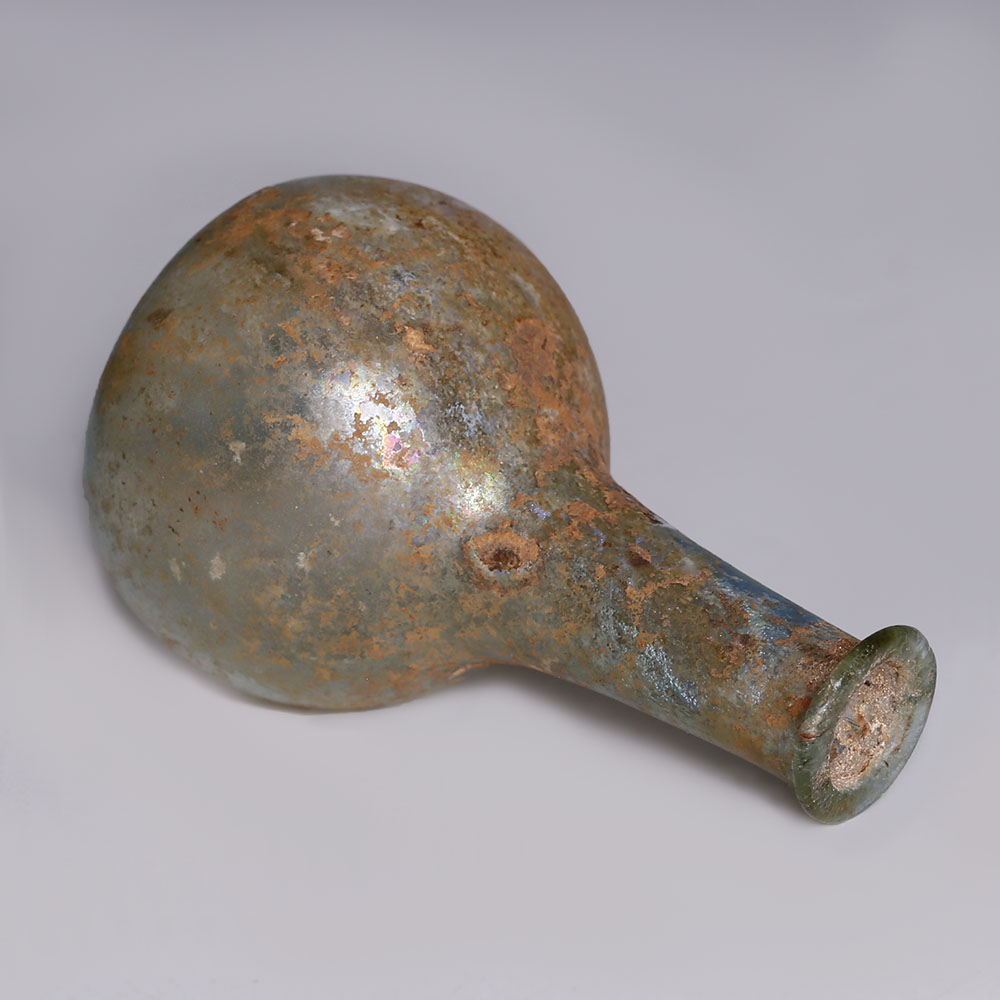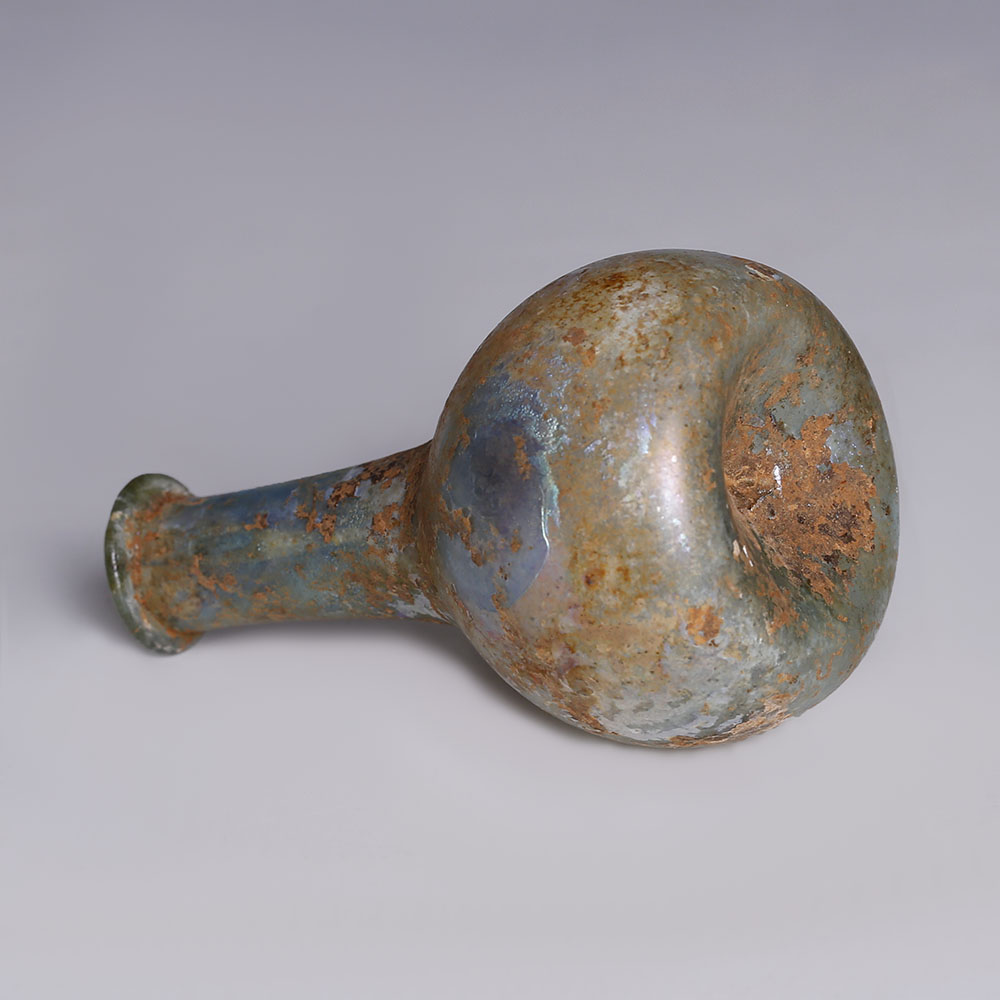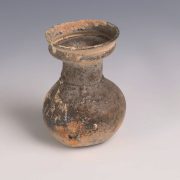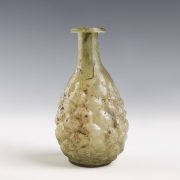Glass was often the preferred material for storing expensive oils, perfumes, and medicines because it was not porous. The small body and mouth of the vessels allowed the user to carefully pour and control the amount of liquid dispensed. By the 1st century AD, the technique of glass-blowing had revolutionised the art of glass-making. The new technique allowed craftsmen to use smaller amounts of glass for each vessel and obtain much thinner walls, so enabling the creation of small medicine, incense, and perfume containers in new forms. These small glass bottles are found frequently at Hellenistic and Roman sites, especially in cemeteries, and the liquids which filled them would have been gathered from all corners of the expansive Roman Empire.
To find out more about Roman glass please see our relevant blog post: Collecting Roman Glass.
